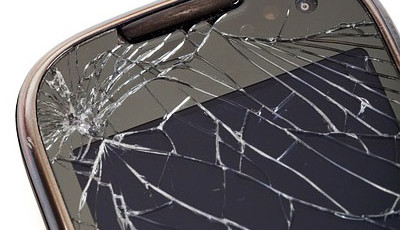New wonder material = no more cracked screens
June 23, 2017
on
on

Researchers at Queen's University's school of Mathematics and Physics in Belfast together with Stanford University, the University of California, California State University and the National Institute for Materials Science in Japan have succeeded in developing new, dynamic hybrid materials that not only conduct electricity at unprecedented speeds, but are light and durable and can be easily produced in large conventional semiconductor plants.
The researchers combined C60 fullerenes with layered materials such as graphene and h-BN (boron nitride) to obtain a unique material with special properties that will be particularly relevant for use in smart device manufacture. With the new material, shattered display screens could well be a thing of the past. A smart device made using this material composition would benefit from properties which are not naturally found in other materials.
According to Dr. Elton Santos the material has the same properties as silicon, but higher chemical stability, lower weight and greater flexibility. It is this latter property that would make a display made of this new material much more difficult to break. The research results were published in the scientific journal ACS Nano and the breakthrough could also lead to new classes of materials in the future. The new material however exhibits no band gap. This problem has yet to be solved, because band gaps are an important property of materials used to make active semiconductor devices. The team led by Dr Santos is investigating a solution to the problem using transition metal dichalcogenides (TMDs) which are chemically highly stable and have bandgaps like silicon.
The researchers combined C60 fullerenes with layered materials such as graphene and h-BN (boron nitride) to obtain a unique material with special properties that will be particularly relevant for use in smart device manufacture. With the new material, shattered display screens could well be a thing of the past. A smart device made using this material composition would benefit from properties which are not naturally found in other materials.
According to Dr. Elton Santos the material has the same properties as silicon, but higher chemical stability, lower weight and greater flexibility. It is this latter property that would make a display made of this new material much more difficult to break. The research results were published in the scientific journal ACS Nano and the breakthrough could also lead to new classes of materials in the future. The new material however exhibits no band gap. This problem has yet to be solved, because band gaps are an important property of materials used to make active semiconductor devices. The team led by Dr Santos is investigating a solution to the problem using transition metal dichalcogenides (TMDs) which are chemically highly stable and have bandgaps like silicon.
Read full article
Hide full article


Discussion (0 comments)